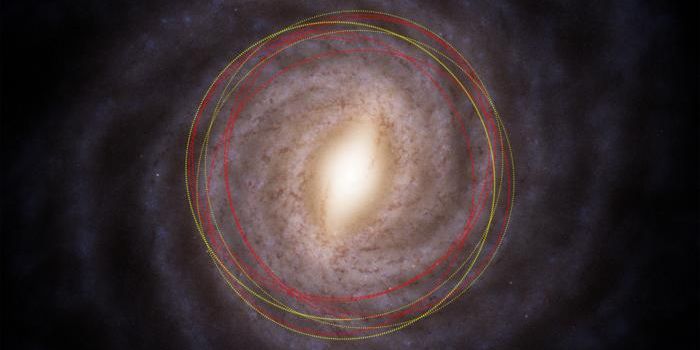In space, the concept of distance can be hard to understand.

The sun is 93 million miles away from Earth, and that isn't considered far away. It's close enough to power our homes, be seen with the naked eye and change our skin color. The moon is much closer, but it's still hundreds of thousands of miles away. Clearly, the whole near and far spectrum is different in space.
However researchers have recently discovered a galaxy that by any standard, even in space parameters, is, well, wicked far away.
A team of astronomers at Yale University has recently discovered the galaxy EGS-zs8-1 and what is more significant than just finding it, is the fact that they were able to measure it. EGS-zs8-1 is a whopping 13.1 billion light-years from Earth, making the distance between it and earth, the longest distances ever measured between earth and any other galaxy.
But wait, there's more. Since our universe is 13.8 billion years old (give or take a few million years) the fact that EGS-zs8-1 is so far away makes it one of the oldest celestial systems in our universe, probably formed not long after our own universe Big Banged into existence.
The neighborhood of space where EGS-zs8-1 lies is about 13 billion light years away, but the significant part of its discovery is not that it exists, but that it was bright enough to be measured.
Scientists don't feel it's the farthest galaxy from us by any means. In a statement from Yale University, lead author of the study that details the discovery, Pascal Oesch, a postdoctoral researcher said, "We have a lot of sources that we can see with Hubble that are probably farther way but we cannot measure their exact distance yet "
Measuring the distance between our planet and other parts of the universe is accomplished by looking at the light emitted by a particular object and measuring how much it shifts. Light shifts because the universe is expanding and cosmic objects in it will naturally move away from each as it does. This is called "redshift"
EGS-zs8-1 was first spotted by the Hubble Space Telescope and the Spitzer Space Telescope and along with it's brightness, the unique colors it gave off made researchers look closer. In addition to calculating its distance from Earth the galaxy's age could be estimated as well based on further observations collected by the MOSFIRE instrument in Hawaii's W.M. Keck Observatory.
By combining all the data from Keck, Spitzer and Hubble, Oesch estimated that the stars in EGS-zs8-1 are "between 100 [million] and 300 million years old."
The rate of star formation is also another significant characteristic of EGS-zs8-1. A statement from Yale University and Oesch said that it had "already built more than 15 percent of the mass of our own Milky Way today," Oesch said in a statement from Yale University.
The study is published online in the journal Astrophysical Journal Letters.
(Sources: Yale University, NASA)









